- Jan 27, 2021
Why Getting Tiny Helps You Catch More Winter Crappie
Very small jigs can make a very large difference for winter crappie fishing, whether you fish through the ice or fish open water. Learn how.
With a sub-zero forecast for a mid-winter Sunday, services were cancelled at Chris Edwards’ church. So what did he do? He went fishing, of course, and that turned out to be an excellent decision. Using double rig of Electric Chicken Itty Bit Swim’Rs on 1/48-ounce heads, the Broken Arrow, Oklahoma angler caught more than 100 crappie that day.
Winter crappie fishing offers definite challenges. Chilled fish won’t expend much energy to feed, and they can be pretty picky. Edwards has learned, however, that by downsizing jigheads and baits and using decidedly subtle presentations, he can continue to enjoy excellent crappie action through the coldest part of winter.
Shooting Small
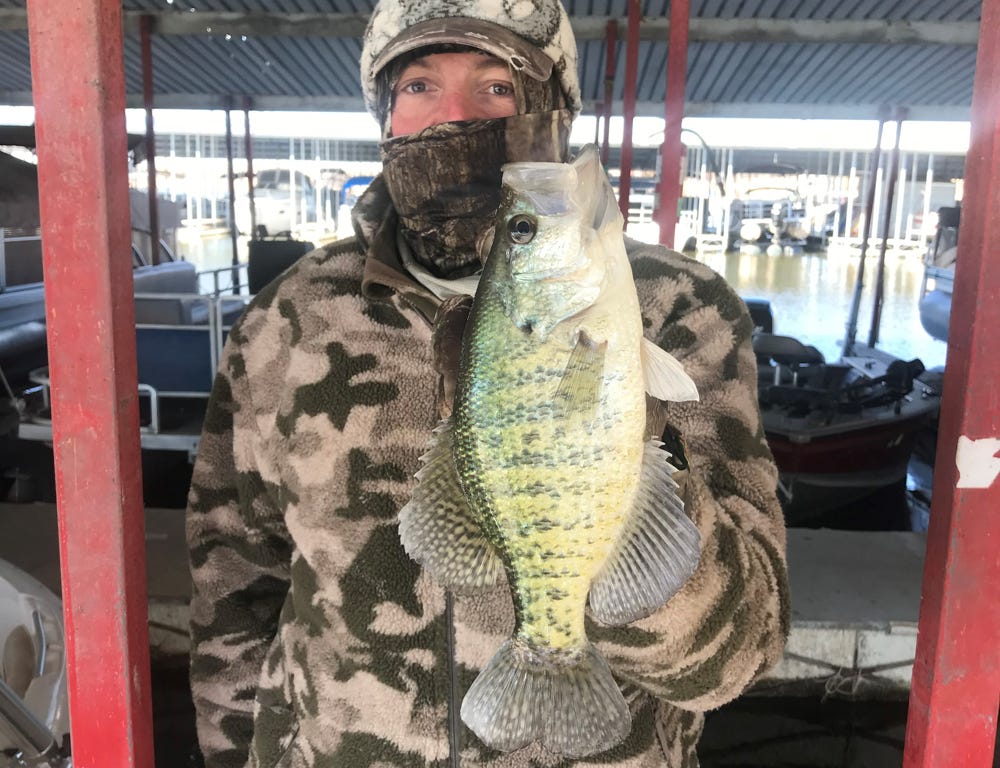

The Bobby Garland Crappie Shooter, which is only 1 ½ inches long, is one of Edwards’ favorite baits for winter crappie fishing because of its size, subtlety and natural appearance.
“When it’s really cold, the fish are lethargic, and they don’t like a lot of motion. That bait doesn’t have a lot of movement, and it falls slowly,” Edwards said.
Crappie shooters are flat and can be rigged with the flat surfaces on the top and bottom or the sides. For cold water, Edwards rigs the Crappie Shooter with the flat sides up and down because that creates the most subtle action. This winter, a shad kill has occurred on some of Edwards’ favorite lakes, making this flat rigging even more inviting because a Crappie Shooter rigged that way very effectively imitates a dying shad.
Using 1/48-ounce Bobby Garland Itty Bit Jigheads, Edwards tandem rigs his crappie shooters, with the top jig attached with a loop knot.
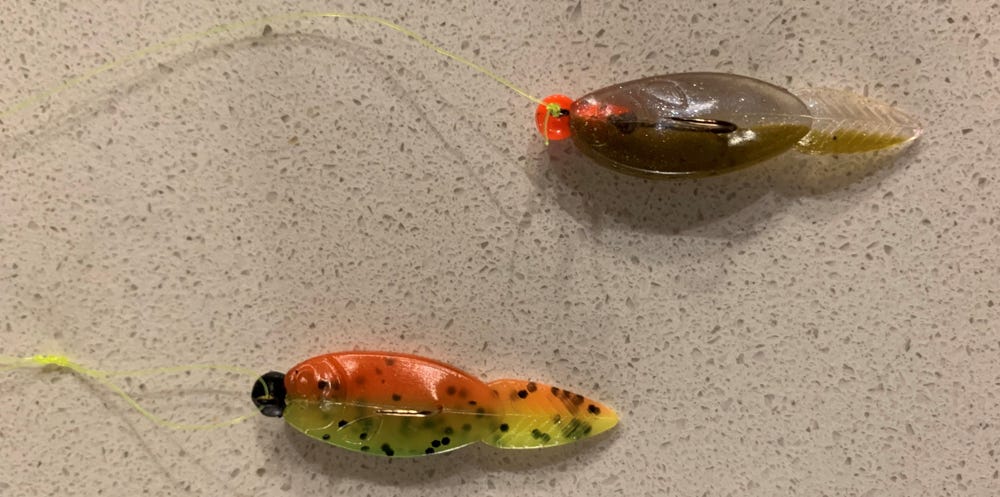

“There’s so much relevance to your wrist,” Edwards always tells anglers who fish with him, stressing the importance of subtlety.
After shooting his rig under a dock (which is where he finds a lot of his winter fish) or pitching it over cover, he allows the baits to fall slowly to the depth the fish are using and then gives his rod the slightest upward pop. He then allows it to fall a couple of seconds before popping it again.
“If they don’t hit it after the second or third pop, I reel in and shoot again, possibly moving over only about 12 inches,” he said.
Edwards has found that the fish won’t chase this time of year. He can shoot to a spot and not get touched, but another shot that’s a foot to the right or left or father under the dock may draw a strike.
Edwards’ No. 1 Crappie Shooter color for a range of conditions is Tadpole. However, he noted that light conditions have a huge impact on the colors that perform the best. Recently, Electric Chicken has been best color early in the morning. Once the sun has gotten up a bit, though, the bite on that color has slowed, and Black/Hot Pink has performed best.
Open Water or Ice
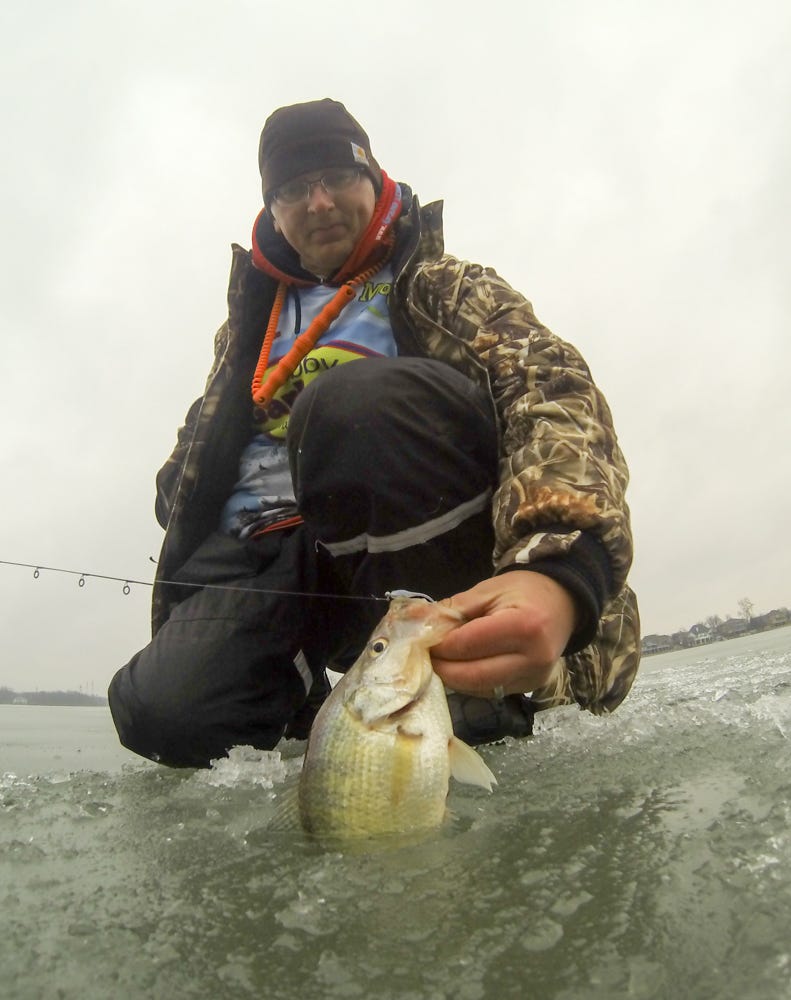

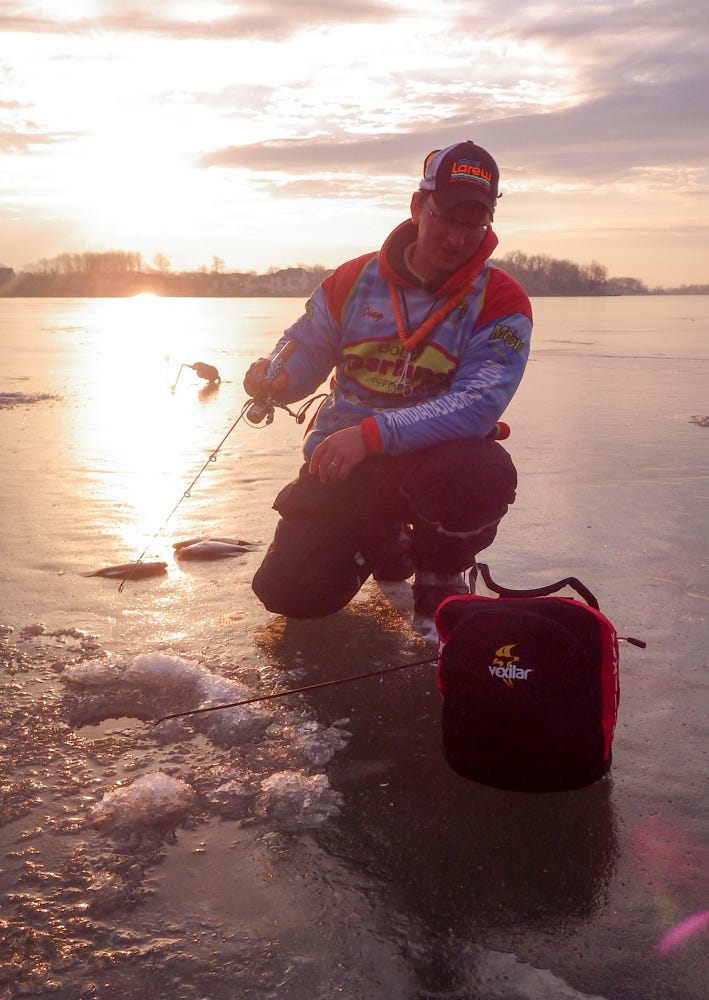

Doug Sikora lives in Indiana, where fishable ice is a “sometimes” proposition. Through mid-water, he commonly has reasonable options for ice-fishing or open water fishing, depending on the direction he points his truck. He fishes similarly for ice and open water crappie during mid-winter, and for either setting, down-sized offerings are often a vital part of the winter crappie fishing success formula.
Like Edwards, Sikora typically crappie fishes with tandem rigs, and he’ll often start the day with a traditional Baby Shad Swim’R on top and a much smaller Itty Bit Swim’R on the bottom, both in the same color and on 1/48-ounce jigheads, to gauge the fish’s comparative interest. Beyond what is made apparent by each fish he catches, Sikora can tell which jig the crappie are relating more to by watching his LiveScope screen or his ice electronics.
During winter, the Itty Bit often draws the best action, in which case he switches to a double Itty Bit rig, possibly using two different colors to further refine the pattern.
A few situations make the Itty Bits extra likely to shine and sometimes will cause Sikora to go straight to Itty Bit Swim’Rs or Itty Bit Slab Slay’Rs. Stained water any time during winter and hard cold fronts both make the crappie extra fussy and favor diminutive baits. Sikora also finds Itty Bits to work best in waters where black crappie are prevalent, which he attributes to their preference of a mixed diet of aquatic insects and minnows.
Sikora also prefers Itty Bits whenever bluegills and crappie are together. “You’ll catch an occasional bluegill on the regular sized crappie baits, but not like you will with the Itty Bits,” he said.
Because he is often targeting black crappie or mixed crappie and bluegills with Itty Bit baits, Sikora generally favors colors like Cajun Cricket and Mayfly over shad- or minnow-imitating colors.
Sikora favors Overbite Sickle Jigheads when crappie are the main attraction, but will switch to Bobby Garland Itty Bit Jigheads when bluegills are a significant part of the mix, having found the ‘gills to favor the unpainted heads.
For normal winter conditions, Sikora mostly fishes vertically, whether from his boat or from atop the ice, because that allows for the most targeted presentations for deeper fish. When late winter delivers unseasonably warm and sunny days, causing the crappie to temporarily move shallower, he’ll add a float above his Itty Bit crappie baits and will cast to the fish. The float allows him to work shallower, but still keep his presentations slow and subtle.
Check out this video of Doug Sikora using an Itty Bit Swim’R from about five years ago, when they were still pretty new!
Less is More
Minimizing motion can be as important as downsizing baits when the water is cold. Edwards and Sikora both stressed the importance of keeping rod movements slow and small.
When Edwards fishes with Itty Bit Swim’Rs, he employs a swimming action, but not by casting and reeling. Instead he positions the boat directly over fish, drops a tandem rig to the depth he wants to work, and then works the bait simply by moving the rod tip very slowly from side to side.
“I don’t really hop it. They don’t want that much movement,” he explained. “I like an approach that keeps the baits down there because they fall very slowly, and I can spend more time with the bait where it needs to be.”
At times during the winter, the absolute best vertical presentation with an Itty Bit Slab Slay’R or Itty Bit Swim’R is a genuine dead-stick approach. Hold the rod tip as still as possible, with the bait suspended in the zone, and let the unstoppable fluttering of the baits’ tails be the only movement.
Expert Tips
Doug Sikora
- Coat baits with Slab Jam, both as an attractant and to cover human scent.
- Watch your line continuously. You’ll never feel some mid-winter bites.
- Use loop knots for the freest movements and so baits hang naturally.
Chris Edwards
- Stretch the end section your line before fishing so your line stays straight and your bait falls freely
- Use warm-colored jigheads for cool-colored baits and cool-colored heads for warm-colored baits
- Pre-rig baits on heads in colors you expect to use so you can spend more of your on-water time actually fishing
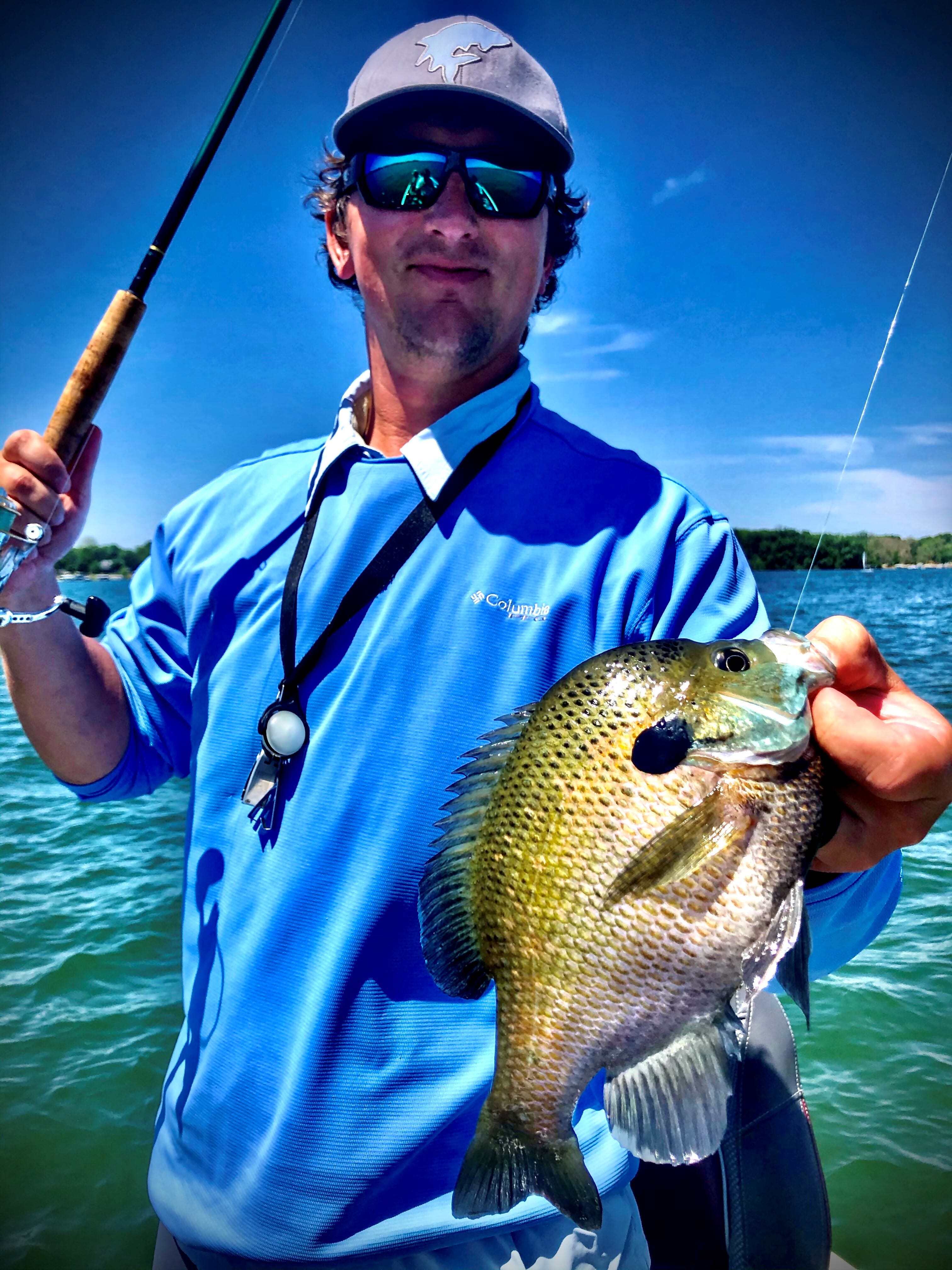

Jigheads
Itty Bit Jigheads – 1/48, 1-/64 ounce, unpainted round heads
Overbite Sickle Jig – Unique hook shape fits tiny baits with a bigger hook, five Mo’ Glo colors in 1/48-ounce size
Crappie Baits
Itty Bit Swim’R – Same great shape, swimming action and scent chamber as an original Swim’R in a 1.25-inch bait
Itty Bit Slab Slay’R – Same irresistible glide and flutter as an original Slab Slayer in a 1/25-inch bait
Crappie Shooter – Flat, subtle, shad-like and very small at 1.5 inches
Scent
Mo’ Glo Slab Jam – Glow and scent in a formula that sticks well to baits



